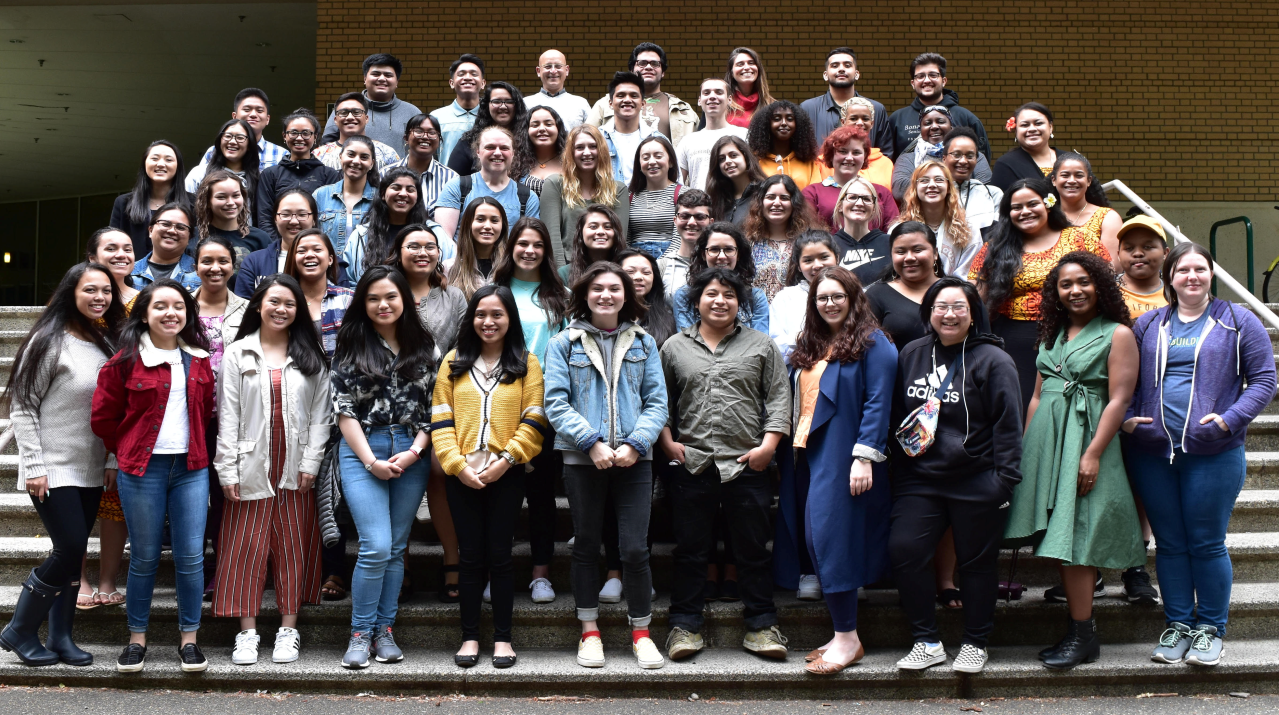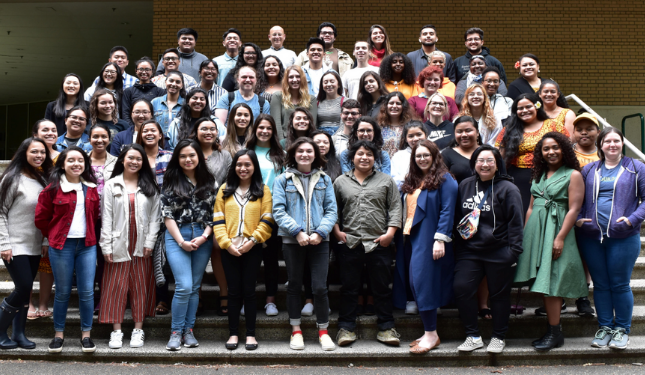Voice of Academia: The Making of a Scientist, Part 2

In the last issue, we introduced you to Carlos Crespo, Dr.PH, a doctor of Public Health with Portland State University. He’s using his own cultural background to build a new approach to cultivating diversity in new scientists/researchers.
Dr. Crespo and colleagues spearheaded a 10-year NIH grant to expose emerging college students to the fields of biomedical research. His grant application arrived at NIH (National Institutes of Health) at a time when NIH wanted to examine how to diversify its grantee population. Here is the rest of his story.
Our grant application to NIH was submitted, reviewed and approved by NIH to begin our study that spanned from 2014 to 2019, for which we received an impressive $24.3 million, we called this phase one or “EXITO 1.0.” Then for phase 2 we received an additional $19.7 million that will expand EXITO 2.0 until 2024. The major goals of these grants are to train the future biomedical research workforce.
In our intervention we identify students and propose an intervention (e.g., mentoring, experiential learning, financial assistance and a supportive environment) to train underrepresented students to become researchers.
At this stage, an accepted student transitions to become an EXITO Scholar. To expand the potential number of program participants, we partner with the University of Guam, University of Hawaii, University of Alaska Anchorage, Portland Community College, Clackamas Community College, American Samoa Community College, Northern Marianas College, Clark College and Chemeketa College. PSU is the primary qualifying institution and OHSU is the research partner institution.
We began work with OHSU because they have great faculty doing excellent research in addition to their traditional clinical responsibilities. We devised a program that would help our Scholars get hands-on biomedical research through experiential learning. Overall, the EXITO Scholars spend two years working with a research mentor at OHSU or PSU.
To date, we have now served more than 400 Scholars. We recruit each incoming class when they are freshman work with them all the way through their senior year in college. We have created cohorts for each of the past 5 years and have recruited between 60 and 90 students for each of the five years.
We recruit students when they’re freshmen and attending PSU and the many partner universities and colleges that make up BUILD EXITO. This is the beginning of a scientist. After being accepted, they come to PSU for a one-week orientation as they transition from being a student and become an EXITO Scholar.
After the orientation, they return to their home institution for their sophomore year, but with a defined curriculum to meet their science objectives. Simultaneously we also recruit faculty members to be their mentors. It is then that we ensure they take part in a Research Learning Community Fair at the end of their sophomore year. This is pertaining to their field of interest so each Scholar can identify the lab they want to work in. They come back to OHSU/PSU Robertson Life Science Building for this fair. We try very hard to match the Scholar with their research mentors. We also teach them soft skills to find and obtain opportunities (e.g., resume prep, interviewing, networking, etc.).
We then set them up with a peer mentor, who is someone ahead of them in the program. We also match them with a career mentor, who is most likely a faculty at PSU or their home institution. Lastly, they are paired with their research mentor- someone who is part of a defined Research Learning Community.
The summer before their junior year, most Scholars are preparing to transfer PSU (some students will stay at their original universities such as in Alaska, Guam and Hawaii). We do onboarding and help them complete the match for their research mentor. We bring everyone to the same level to ensure we cover gaps in their knowledge base up to that point. They work with an academic advisor to make sure their course credits will transfer. This onboarding process is called Summer Induction. Once classes start the scholars spend an average of 10 hours a week with their research mentor in their Research Learning Community while completing their junior year.
The students coming into their Research Learning Communities for the first time are often shy and unsure of their skills. Dr. Crespo tells them “Go and break things with gusto, because you bring with you a lifetime of innovation and improvisation.”
Crespo says funding exists for replacing research supplies.
The third summer, the Scholars starts their own research as part of what we called their Summer Immersion. They stay linked up with their cohort throughout their training and participate in regular research enrichment workshops, in addition to brown bag sessions and Grand Rounds. “It’s important that the Scholars in each cohort feel connected and together – cohort effect. They do a summer immersion, working with their research mentor, proposing a research project, getting help formulating a hypothesis, collecting data and analyzing findings through for at least 30 hours a week. They complete their research in about 10 weeks, then they present it at the end of summer.
During senior year, students finalize their theses/posters and/or papers. They get some financial support to present at professional meetings such as meeting from any of the Societies for Experimental Biology, etc. “Our goal for them in the senior year, is that they are ready to apply for a specific Graduate Program. We help them throughout the application process,” says Crespo.
 The goal is for each Scholar to finish his or her degree – such as a Bachelor in Science degree. These are not necessarily only STEM students. While some do biology and chemistry, other pursue a variety of post-grad work in Psychology, Social Work, Environmental Studies, Anthropology, Astrophysics, Dentistry, Biophysics, Molecular biology, Epidemiology, Nursing, and Public Health for example. The percentage number of students going to grad school is about 40 percent. Some do not finish in 4 years and do an extra year or term as this is an intense program.
The goal is for each Scholar to finish his or her degree – such as a Bachelor in Science degree. These are not necessarily only STEM students. While some do biology and chemistry, other pursue a variety of post-grad work in Psychology, Social Work, Environmental Studies, Anthropology, Astrophysics, Dentistry, Biophysics, Molecular biology, Epidemiology, Nursing, and Public Health for example. The percentage number of students going to grad school is about 40 percent. Some do not finish in 4 years and do an extra year or term as this is an intense program.
“We have students who have applied and been accepted into Harvard, University of California Berkeley, Northwestern University, OHSU, University of Michigan, Johns Hopkins University, Howard University, University of Maryland, and Loma Linda University. They are crushing it. It is so rewarding to see them grow,” Crespo observes.
“How do we know we are successful? It has to do with students self-identifying as researchers. We look at declared majors compared to their larger peer populations and see how many enlist in post-graduate programs.”
There was a reason we named the program EXITO for the NIH grant application, which stands for Enhancing Cross-disciplinary Infrastructure and Training at Oregon. In Spanish, ‘exito’ translates to mean success, prosperity, impact, and achievement. “That’s how we create scientists; one EXITO Scholar at a time.”
